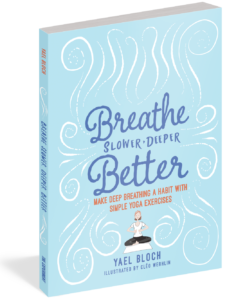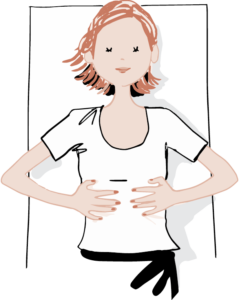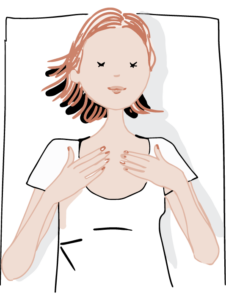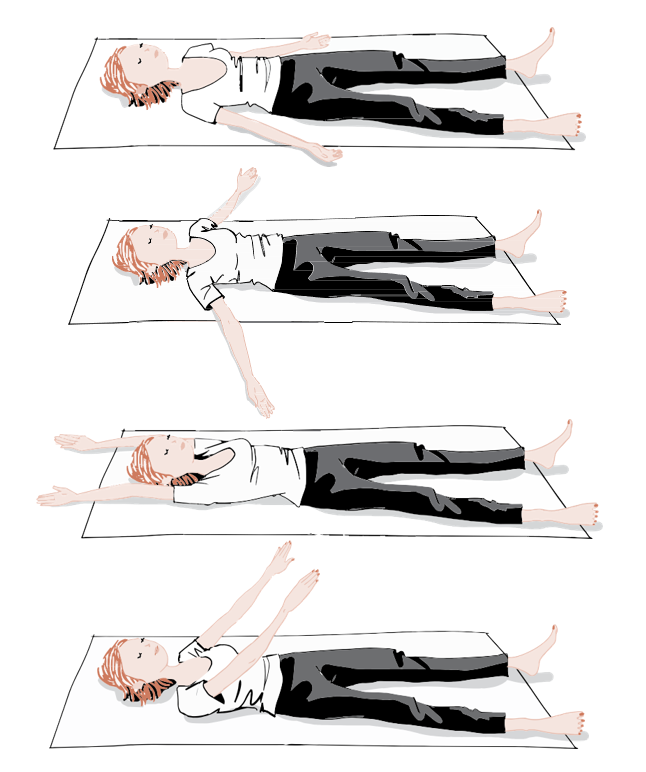 When you think about it, there’s nothing more basic than breathing—it’s the first thing you do when you’re born, no instruction required! Still, experience doesn’t mean we know what we’re doing—especially when it comes to something as important breath. Yoga instructor Yael Bloch is here to teach us how to do it better in her new book Breathe Slower, Deeper, Better: Make Deep Breathing a Habit with Simple Yoga Exercises, available now.
When you think about it, there’s nothing more basic than breathing—it’s the first thing you do when you’re born, no instruction required! Still, experience doesn’t mean we know what we’re doing—especially when it comes to something as important breath. Yoga instructor Yael Bloch is here to teach us how to do it better in her new book Breathe Slower, Deeper, Better: Make Deep Breathing a Habit with Simple Yoga Exercises, available now.
You don’t have to be a yogi: Anyone can unlock centered, supple, slow, and harmonious breathing through Yael’s simple exercises and tips. You’ll learn how to develop a deep, lasting sense of calm through breath, improve your lung capacity, abdominal strength, and blood circulation, reduce negative emotions, and strengthen your immune system. Want to try it for yourself? Check out this sample exercise from Breathe Slower, Deeper, Better below!
***
In yoga, there are three separate breathing stages: abdominal breathing, which gets its name from the movement of our bellies; thoracic breathing; and chest, or clavicular, breathing. When these three stages are engaged and in sync with our breath, the lungs are fulfilling their natural role, and the body is properly oxygenated. This is one facet of wellness. Our breathing is, at its most optimal, naturally expansive. The best way to feel these three stages is on your back. It’s easiest to focus clearly on breathing when the body is relaxed.
Tips for Becoming Aware of the Three Stages of Breathing
Your breath should be calm and easy. Spend a few breaths in each of the positions described below, centering your attention on your sensations, particularly beneath your hands. Next, stimulate your breath around the area in question by gently pushing down with your hands as you exhale. Then, release the pressure and, while inhaling, feel your body as it softly presses into your hands. You can highlight each movement by breathing more loudly for a few breaths. To better mark your exhalation, try blowing out through your half open mouth or making a noise.
First Position: Abdominal Breathing
Place your hands on your belly so that the tips of your middle fingers touch as you exhale. This will make it easier to spot your hands drifting apart as you inhale, thus marking the rise of your belly. This is called “baby’s breath,” because it is highly visible in babies. Picture a balloon that inflates during inhalation and deflates during exhalation. Remember, even though the goal is to develop a belly-focused movement, the point isn’t to puff up your belly like a balloon either! This process can take time, so don’t worry if you don’t manage it immediately. The mere awareness that it is possible to improve your breathing is already a big step, so be patient. Think about it when you get into bed, before you fall asleep.

Second Position: Thoracic Breathing
Place your hands on your rib cage, level with your lower ribs. This way, you’ll see your breath moving in every direction. Think of dancers for a moment, and you’ll see that this is how they breathe: their abdominal muscles, usually contracted when in action, constrain their ability to breathe with their bellies, and their chest breathing is constrained by their attempt to hide their accelerated breath. But, look at their sides and you’ll see the effects of their movements and leaps, their breath’s exertion. If you can’t feel your lower ribs moving—as is often the case with people who are predominantly chest breathers—gently apply downward pressure on your ribs while exhaling, as if trying to get your right and left ribs to meet. Then, relax this pressure when inhaling and try to feel your ribs expanding as they push your hands up and to the side. Picture an accordion that opens during inhalation and closes during exhalation.

Third Position: Clavicular Breathing
Place your hands on your clavicles. Clavicular breathing is beneficial when used in addition to the two previous breathing stages and can be felt by setting your hands in this position. Picture a drawer that pulls out toward your chin when you inhale and closes when you exhale. If you can only find your breath in this one spot, that’s a sign of stress. This type of breathing requires a lot of effort for mediocre results. The shoulders lift so that only a small section of the lungs can fill to the max. Only a small percentage of our thoracic capacity is used.

Summary Practice: Full Breathing with Arms
This breathing method combines the three stages of inhalation and exhalation and ensures broad movement of the diaphragm and rib cage. During inhalation, the diaphragm drops, pressing down on the abdomen, which lifts (abdominal breathing). Then, as the diaphragm meets resistance, the ribs open, all the way up the rib cage (thoracic and clavicular breathing). Follow this movement with your arms by spreading them open on the floor and sweeping them upward to the back of your head, like a child making a snow angel. The arms should extend, naturally triggering a suspension of breath and provoking a yawn or sigh.

***
And that’s all there is to practicing good breathing! Working through these exercises even once a day can trigger the secretion of endorphins, and improve our stress endurance, quality of sleep, memory, energy, and even our worldview. To discover even more breathing tips, exercises, and movements, be sure to get your copy of Breathe Slower, Deeper, Better by Yael Bloch now!


